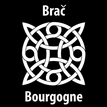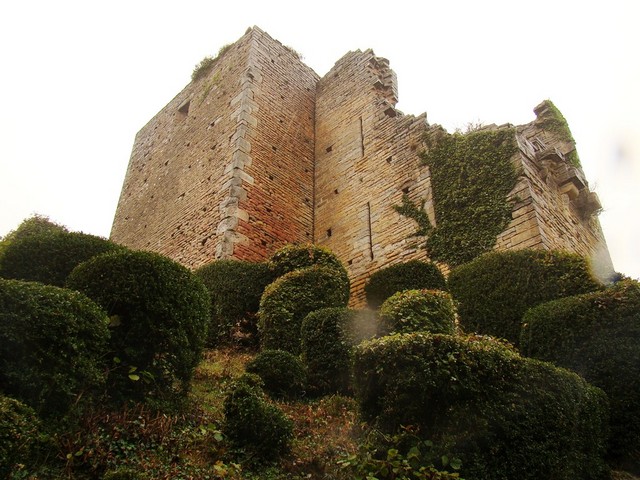The project “Story of the stone, Brac-Bourgogne” is implemented through an international partnership between 4 schools from different subsystems of education in Croatia and France. Osnovna škola Pučišća (island Brač) was the coordinator of the project, and Collège A. Malraux (Dijon), Lycée Les Marcs d’Or (Dijon), Klesarska škola (Pučišća) were project partners.
The main project objectives are:
- To improve the professional competences of teachers enabling them to implement innovative and creative cross-curricular teaching, research and project teaching.
- To increase students' motivation for learning and their educational achievements through innovative educational practices.
The project partners teamed up exploring the possibilities of integrative, cross-curricular teaching on the common topic: Stone in the culture and architecture of medieval Brač and Bourgogne. The topic was implemented in school curriculum of each school and processed through experiential learning in cross-curricular teaching.
Primary school teachers (class-teachers) tried to "erase" the boundaries between educational disciplines, making students stop thinking about the school subjects. They were thinking about the topic being studied, how to solve problems, and how to shape the results and the presentation.
The results achieved during the implementation of the project – which are the consequences of a multidisciplinary approach and which required the knowledge (tools) of all teaching areas – have been materialized and publicly introduced during the project and after its completion. Material project results demonstrate the quality of students’ and teachers’ work in cross-curricular teaching. Students’ and teachers’ competencies acquired through the project are built into the personality of each individual and has become its lasting property.
The subject teachers (specific disciplines) who participated in this project joined the multidisciplinary teams and processed a common issue (topic) from different aspects. The boundaries between various subjects were again erased, because the students mastered the knowledge from different disciplines led by the desire to solve the common problem.
In each partner institution, one department (class) has been selected to study the topic: "Getting to know the early Middle Ages in the homeland through existing stone monuments".
Since partner institutions belong to different levels of education (two institutions comprise students from 11 to 14 years - lower secondary school, and other two institutions students from 15 to 18 years - secondary vocational school), each group of teachers has selected a department at its own discretion. This is a real proof that methodology gives results at all levels of education.
Teachers' teams at each school met regularly, planned their work, discussed what skills and knowledge students at certain stages of the project needed; each teacher within his discipline provided the tools necessary in the research work and information processing. The creative enthusiasm and motivation of the participants have strongly contributed to the excellent project results.
The teaching has been realized through the following stages:
a) exploring facts and collecting data (in reality or in literature)
b) processing collected information (in the classroom)
c) linking new information with previous knowledge (classroom)
d) systemizing and displaying acquired knowledge using different means of expression:
word, picture, charts, three-dimensional models, photo, multimedia
e) applying acquired knowledge in problem tasks from different teaching areas.
The recommended methodology of work is based on Gaardner's theory of multiple intelligences. Different learning styles and different minds of students are respected, but also an educational imperative that all students understand the teaching content and new concepts.
Evaluation of teaching methods is based on student "products". The results of their work are reflected in creative works (through various expressive means). Regardless of the quality, from the student works one can clearly see if they have understood new concepts and acquired new knowledge.
COGNITIVE PROCESS AND METHODICAL PROCEDURES IN RESEARCH LEARNING
| PARTS OF THE LEARNING PROCESS | INCENTIVE QUESTIONS |
| 1. Noticing phenomenon | What did you notice? How do you interpret it? Why? |
| 2. Collecting necessary data | What you cannot explain? Which information is missing? Where can you find it? |
| 3. Information processing | What that reminds you of? What are the similarities and differences? What's the most important thing? What can you do with that? If this happens, what will be next? |
| 4. Making conclusions |
What can you conclude from all the data?
How will you check if the conclusion is valid? |
| 5. Displaying the solution in accordance with the mental picture | How can it be displayed and conveyed to others (image, word, graph, image and word combination, brochure, model ...)? |
| 6. Understanding the usable value of acquired knowledge | Where could you use what you just learned? |
Pedagogical documentation on work (activity sheets / PP presentations / booklet with description of work) contains a description of the abovementioned methodological procedures. According to these documents, teachers who did not participate in the project can master the methodology and apply it practically in their work. They can apply their knowledge and experience in realizing educational reforms that are currently taking place in France and Croatia, which have a common goal: to make education attractive and useful to students and to make acquired knowledge and skills permanent.
CONCLUSIONS ON THE ACHIEVED PROJECT RESULTS
Multidisciplinary (cross-curricular) teaching has justified its purpose through accomplished work results.
- Positive changes that can trigger changes in the partner countries' educational systems have been introduced in everyday educational practice:
- the educational process has been dynamized,
- emotions have been involved in educational process,
- educational content has been linked to the situations and problems of everyday life.
- Students’ motivation for learning has increased.
- The students became aware of the purposefulness of education.
- The student's knowledge is permanent and applicable in everyday life.
- Students' key competences have increased.
- Each student has been self-realized and has expressed his peculiarities, depending on the dominant type of intelligence.
The quality of work of all project partners is reflected in the joint final product - the cultural handbook "Brač-Bourgogne: The Story of Stone" in which the results of all student research on the topic "Early Middle Ages in Bourgogne and Brač introduced through existing stone monuments" are integrated and harmonized. The book is both printed and published on the Internet, and will serve the current and the future students of partner schools and partner countries as a historical textbook. It will enable them to better understand their homelands in the European historical context. For all project partners, this book is a reminder of the common work and proof of the touches and differences between our civilization and cultural reaches.

